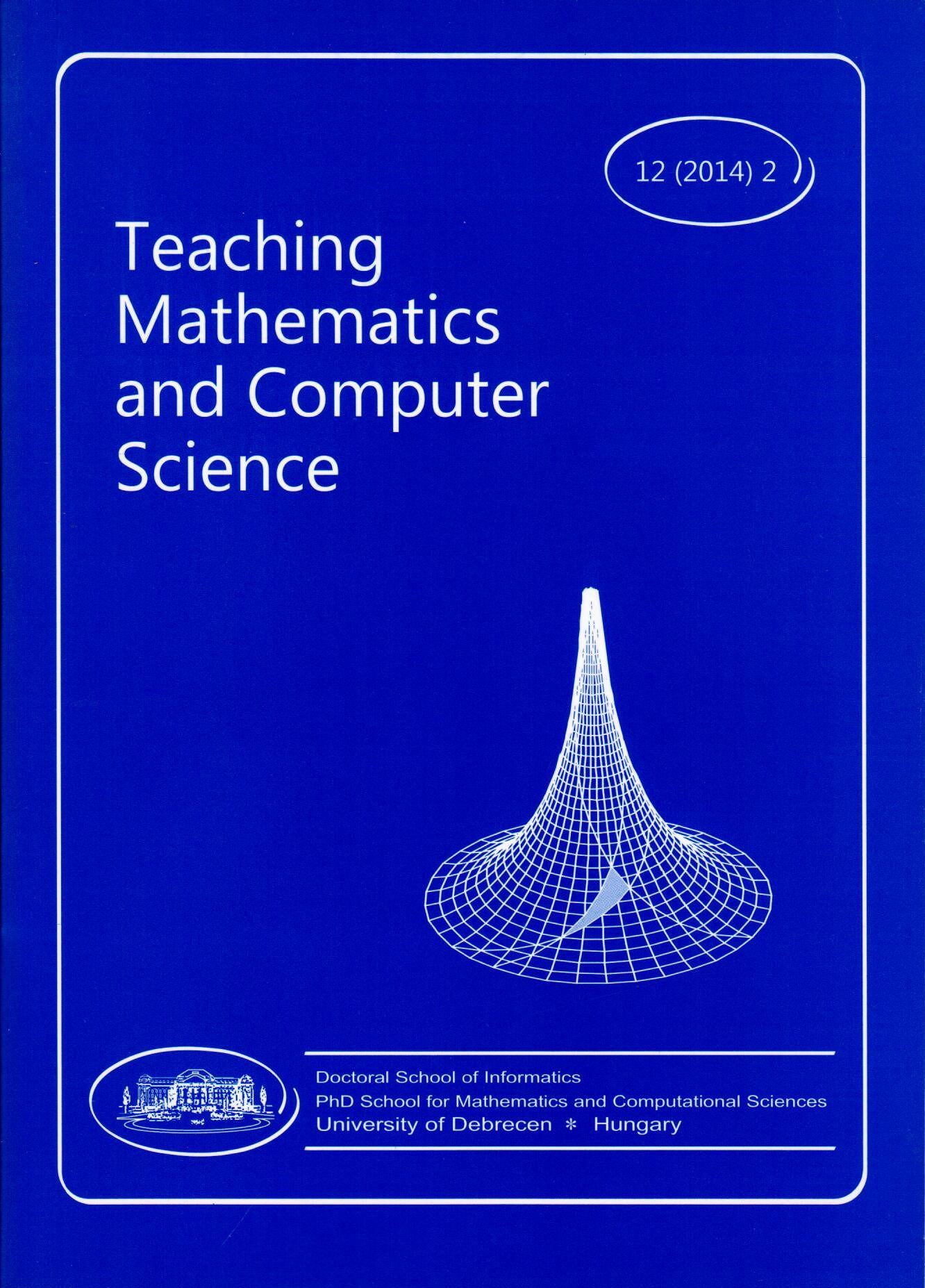Articles
Heuristic arguments and rigorous proofs in secondary school education
Published:
2014-12-01
Author
View
Keywords
License
Copyright (c) 2014 Zsolt Fülöp

This work is licensed under a Creative Commons Attribution 4.0 International License.
How To Cite
Selected Style:
APA
Fülöp, Z. (2014). Heuristic arguments and rigorous proofs in secondary school education. Teaching Mathematics and Computer Science, 12(2), 167-184. https://doi.org/10.5485/TMCS.2014.0367
Abstract
In this paper we are going to discuss some possible applications of the mechanical method, especially the lever principle, in order to formulate heuristic conjectures related to the volume of three-dimensional solids. In the secondary school educational processes the heuristic arguments are no less important than the rigorous mathematical proofs. Between the ancient Greek mathematicians Archimedes was the first who made heuristic conjectures with the methods of Mechanics and proved them with the rigorous rules of Mathematics, in a period, when the methods of integration were not known. For a present day mathematician (or a secondary school mathematics teacher) the tools of the definite integral calculus are available in order to calculate the volume of three dimensional bodies, such as paraboloids, ellipsoids, segments of a sphere or segments of an ellipsoid. But in the secondary school educational process, it is also interesting to make heuristic conjectures by the use of the Archimedean method. It can be understood easily, but it is beyond the normal secondary school curriculum, so we recommend it only to the most talented students or to the secondary schools with advanced mathematical teaching programme.

 https://doi.org/10.5485/TMCS.2014.0367
https://doi.org/10.5485/TMCS.2014.0367






